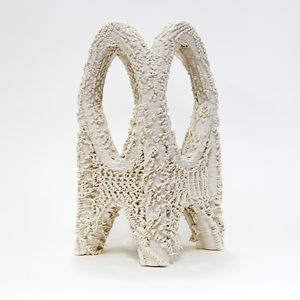Defence of doctoral thesis in the field of Building Design, MA Ashish Mohite

When
Where
Event language(s)
MA Ashish Mohite will defend the thesis "Speed-Based Additive Manufacturing Technique: Discovery and Exploration of Design Potential of Speed of Deposition in Additive Manufacturing" on 17 September 2021 at 12:00 in Aalto University School of Arts, Design and Architecture, Department of Architecture.
Opponent: Prof. Malgorzata Zboinska, Chalmers University of Technology, Sweden
Custos & supervising professor: Prof. Toni Kotnik, Aalto University School of Arts, Design and Architecture, Department of Architecture
Advisors: prof. Toni Kotnik, prof. Jouni Partanen
The public defense will be organized via remote technology. Follow defence:
Zoom Quick Guide: https://www.aalto.fi/en/services/zoom-quick-guide
Thesis available for public display at: https://aaltodoc.aalto.fi/doc_public/eonly/riiputus/
Doctoral theses in the School of Arts, Design and Architecture: https://aaltodoc.aalto.fi/handle/123456789/54
Press release:
This paper-based doctoral thesis is the result of a PhD research into generative design potential of certain fabrication parameters in Additive Manufacturing (AM). Advent and proliferation of Computer-Aided Manufacturing (CAM) in the field of architecture challenges the way buildings are designed and made. Like construction methods before CAM, large-scale concrete and metal 3D-printing will set limitations and opportunities for design, however, uniquely it will offer a chance for architects to radically expand the profession's domain. In digital fabrication, an architect has a capacity to participate in designing construction workflow.
The research contributes to the body of work, dedicated to adoption of AM in architectural practice by providing foundations for utilizing various printing parameters, in particular speed of movement to generative ends. Even though only small-scale models were produced, iterative experimentation with continuous growth of complexity allowed to generate sufficient amounts of objective data and tacit knowledge on main dependencies and causalities between elements of design and fabrication. That information was then synthesized into diagrams and fed into the design of the process model, which embodies Speed-Based technique.
Contact information of doctoral candidate:
| [email protected] | |
| Mobile | +3554333679 |